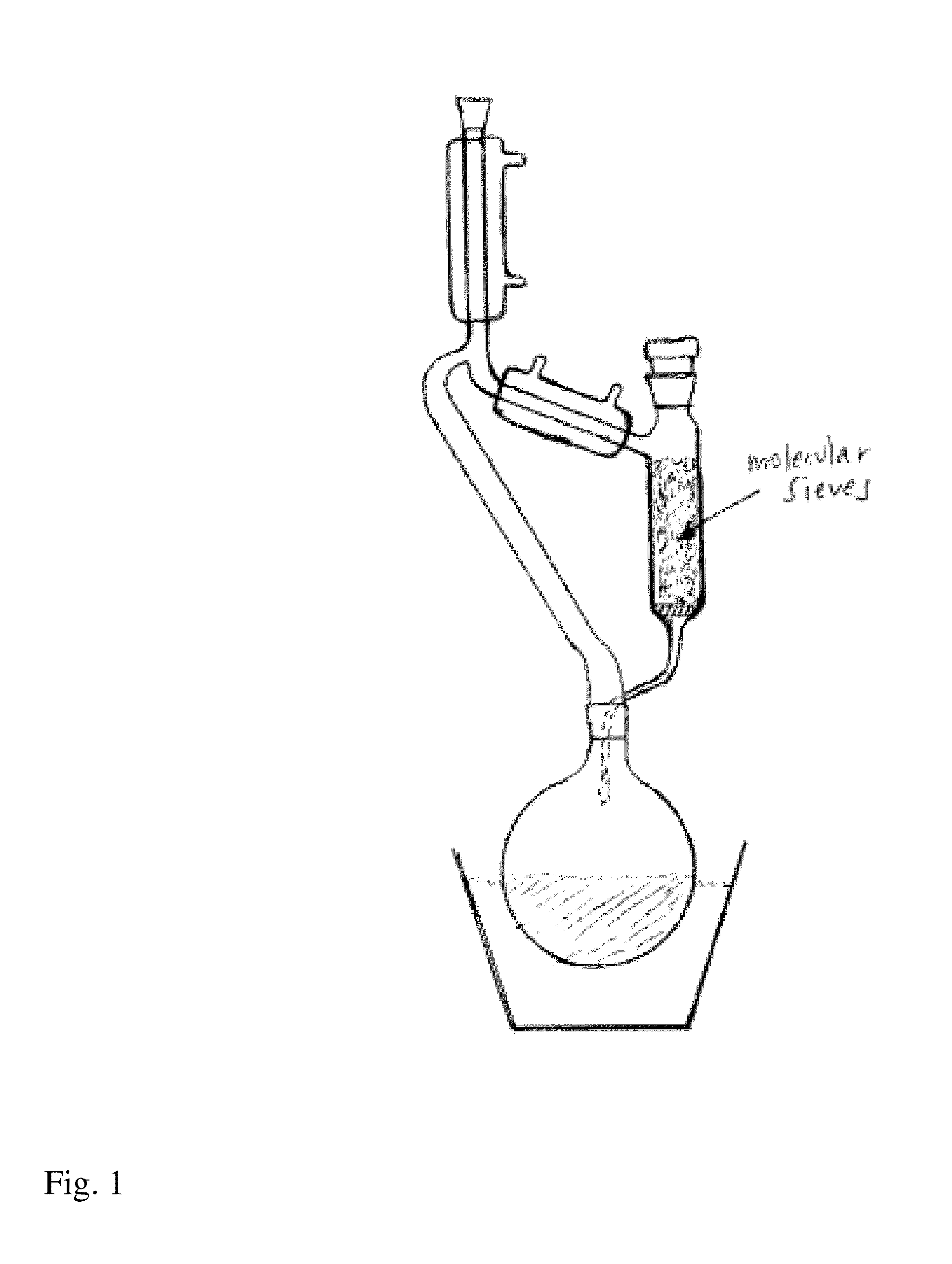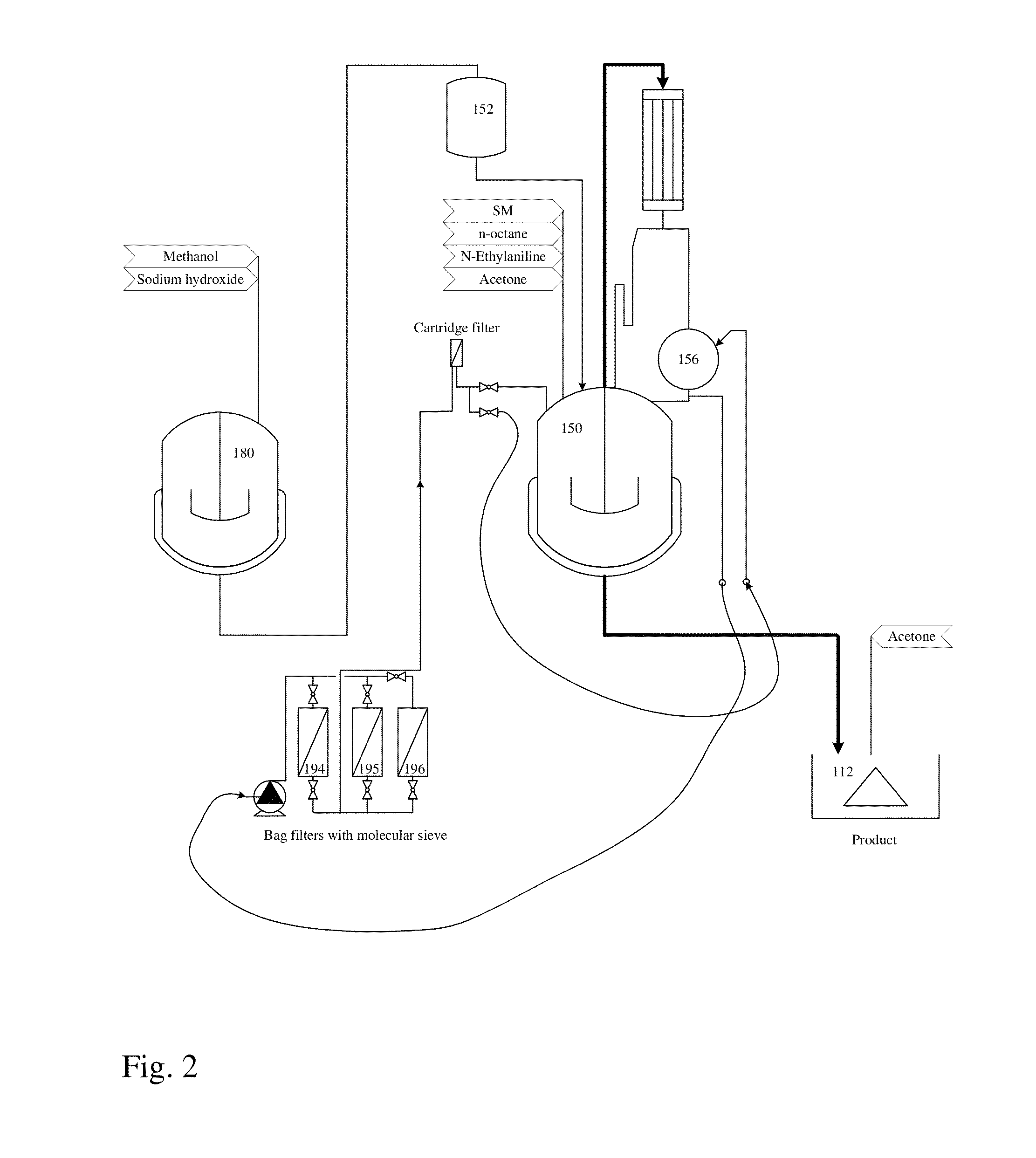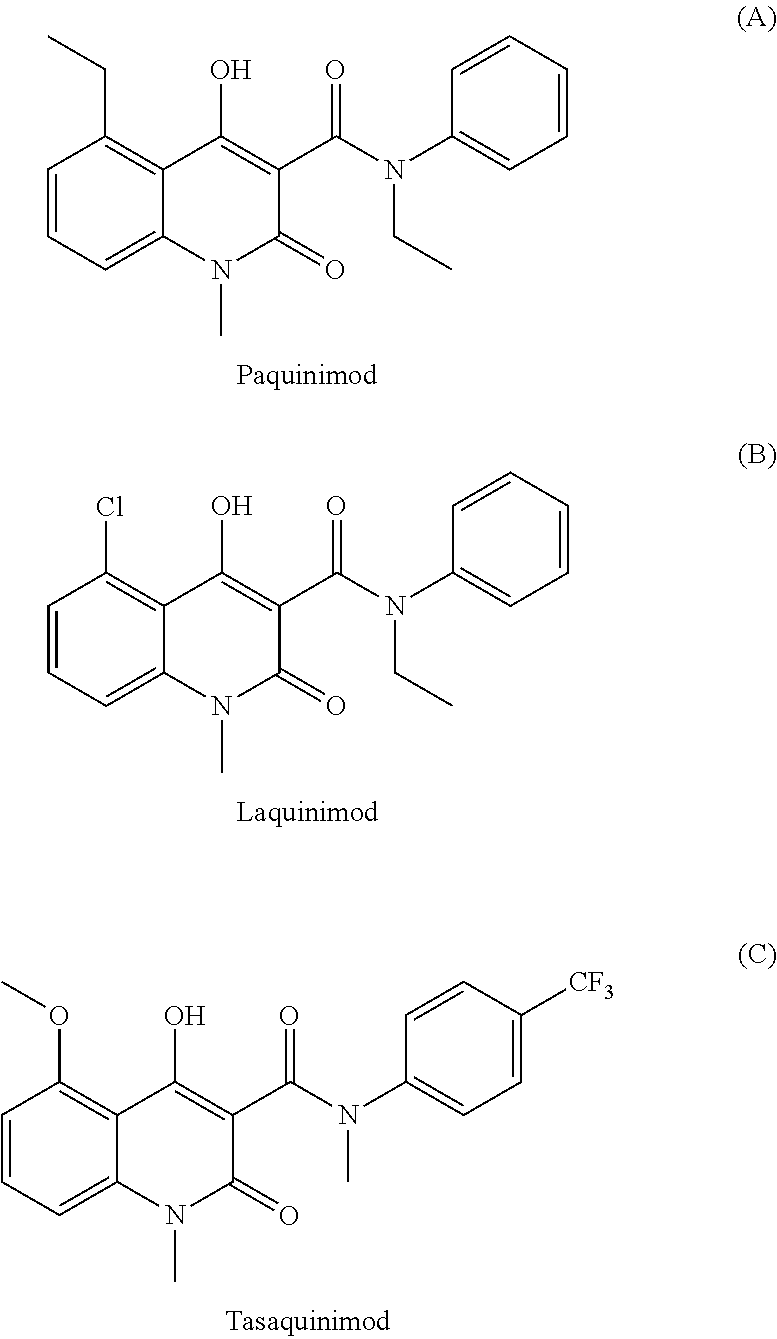Method for manufacturing of quinoline-3-carboxamides
a manufacturing method and technology of quinoline-3-carboxamide, applied in the field of organic synthesis, can solve the problems of large and unpredictable amounts of aliphatic solvent, insufficient recrystallisation, and inability to achieve pure products, so as to achieve short reaction time, reduce energy consumption, and increase the reaction yield
- Summary
- Abstract
- Description
- Claims
- Application Information
AI Technical Summary
Benefits of technology
Problems solved by technology
Method used
Image
Examples
example 1
Preparation of Compound A (Entry 17)
[0077]A mixture of 4 (5.00 g) and N-ethylaniline (4.7 g) in n-heptane (200 mL) was refluxed in a Soxhlet extraction apparatus (FIG. 1) containing 4 A molecular sieves (22.9 g). The reflux was stopped after 2.0 hours and the mixture was cooled to room temperature. The crystalline suspension was filtered. The precipitate was washed with n-heptane and dried in vacuum to furnish 5.53 g (82%) of N-ethyl-N-phenyl-5-ethyl-1,2-dihydro-4-hydroxy-1-methyl-2-oxoquinoline-3-carboxamide (A). 1H-NMR analysis on the isolated product revealed 2% remaining ester. 1H-NMR (d-DMSO), all broad peaks; 11.1 (1H), 7.41 (1H), 7.29 (2H), 7.21 (3H), 7.14 (1H), 6.96 (1H), 3.80 (2H), 3.42 (3H), 3.08 (2H), 1.07 (3H), 1.06 (3H).
[0078]When the same reaction was performed by the traditional distillation from n-heptane (Entry 22) during 2 hours according to prior art U.S. Pat. No. 6,875,869 the product was isolated in 85% yield (based on compound A) and found by 1H-NMR to be a mix...
example 2
Preparation of Compound B (Entry 2)
[0079]A mixture of 6 (5.00 g) and N-ethylaniline (5.0 g) in n-heptane (150 mL) was refluxed for 4.0 hours in a Soxhlet apparatus containing 4 A molecular sieves (22.9 g). After cooling the mixture the product was isolated as above to furnish 6.54 g (98%) of N-ethyl-N-phenyl-5-chloro-1,2-dihydro-4-hydroxy-1-methyl-2-oxo-quinoline-3-carboxamide (B). 1H-NMR analysis on the isolated product revealed no impurities. 1H-NMR (CDCl3) 12.6 (s, 1H), 7.41 (t, 1H), 7.08-7.26 (m, 7H), 3.98 (q, 2H), 3.30 (s, 3H), 1.22 (t, 3H).
example 3
Preparation of Compound B (Entry 3)
[0080]A mixture of 6 (5.00 g), N-ethylaniline (5.0 g) in n-heptane (150 mL) was refluxed for 4.0 hours in the Soxhlet apparatus containing calcium chloride dihydrate (flakes for drying purposes, 22.0 g). After cooling the mixture the product was isolated as above to furnish 6.20 g (93%) of N-ethyl-N-phenyl-5-chloro-1,2-dihydro-4-hydroxy-1-methyl-2-oxo-quinoline-3-carboxamide (B). 1H-NMR analysis on the isolated product revealed 1% remaining ester.
PUM
| Property | Measurement | Unit |
|---|---|---|
| Temperature | aaaaa | aaaaa |
| Current | aaaaa | aaaaa |
| Current | aaaaa | aaaaa |
Abstract
Description
Claims
Application Information
 Login to View More
Login to View More - R&D
- Intellectual Property
- Life Sciences
- Materials
- Tech Scout
- Unparalleled Data Quality
- Higher Quality Content
- 60% Fewer Hallucinations
Browse by: Latest US Patents, China's latest patents, Technical Efficacy Thesaurus, Application Domain, Technology Topic, Popular Technical Reports.
© 2025 PatSnap. All rights reserved.Legal|Privacy policy|Modern Slavery Act Transparency Statement|Sitemap|About US| Contact US: help@patsnap.com



